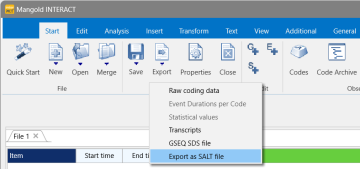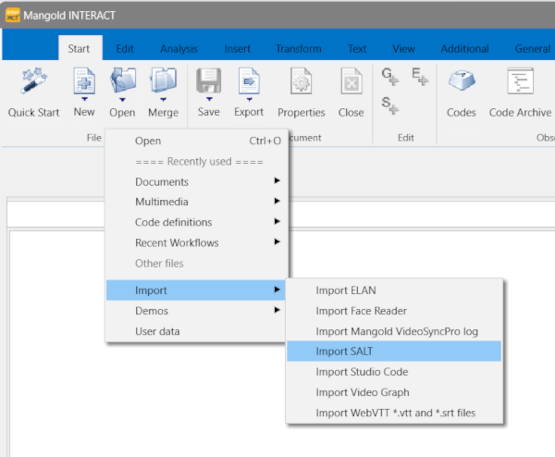Transcriptions: Working with SALT and INTERACT
Learn about exchanging transcripts between SALT and INTERACT
Transcriptions
Mangold INTERACT offers a close integration with the language analysis tool SALT (Systematic Analysis of Language Transcripts).
SALT manages the process of eliciting, transcribing and analyzing language samples with the aim of analyzing the language development of English and/or Mexican speakers.
To exchange transcripts, you can import SALT transcripts (*.slt) to INTERACT and enrich your data by adding any kind of video-based observation.
After adding specific observation data to Mangold INTERACT, and perhaps editing the transcript yourself while observing the video, you can again export the entire edited data set into a SALT (*.slt) file to compare it with typical peers and other programs within SALT using the reference database.
It is also possible to encode and transcribe all content in Mangold INTERACT and export the data as *.slt files for more detailed speech analysis. This analysis can only be performed in SALT if you use SALT's transcription conventions when entering transcriptions in INTERACT.

Time Information
SALT transcripts do not have detailed time information like Mangold INTERACT does.
A typical SALT transcript contains only so-called "minute marks" between transcribed lines. During the import process, these "minute marks" are used to create continuous timing for all events within a minute. This ensures an even distribution of transcribed lines in time.
In addition, the original "static data" in the SALT file is converted to Meta data in Mangold INTERACT.
If you start observation and transcription in Mangold INTERACT, the SALT-specific minute marker information is missing. In this case, the SALT-Export program in INTERACT will automatically generate the required minute markers.

